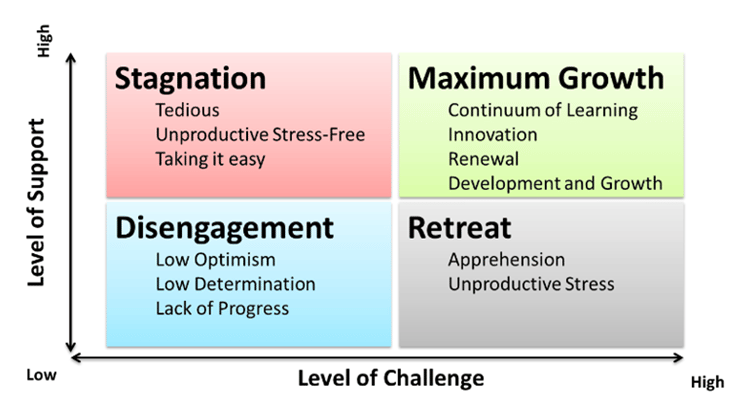Since childhood, we’ve been taught to see things in binary terms: this and that, success and failure, good and bad. At its best, it helps us simplify decisions. But more often than not, this view creates major problems for us.
For one, life’s richness often lies in the spaces between yes and no, black and white. Aiming for an either-or decision brings confusion, debilitating pains in decision-making, and resentment. A bigger problem is that we confuse polarity as a mutually exclusive pair and risk losing sight of what matters to us.
Today’s newsletter explores the challenges in managing polarity in decision-making and leadership.
This ONE Idea
“Think of it like breathing. Breathing isn’t a choice between inhaling or exhaling. If you inhale to the exclusion of exhaling, the negative results show up quickly. And the reverse is also true. The polarity approach says, we must both inhale and exhale.”
The joys of polarity mapping (link)
What is polarity?
Polarity in life and work refers to pairs of opposites that are interdependent, such as assertiveness and empathy, planning and action, or stability and change. Unlike problems that can be solved once and for all, polarities are ongoing, dynamic elements that need to be managed continuously. Understanding this can prevent us from falling into the trap of ‘either/or’ thinking, pushing us towards a more inclusive ‘both/and’ perspective.
Many of us chant this mantra of maturity, “one cannot have it all.” We see it as a sign of being naïve if we don’t make a painful choice to drop or at least deprioritize one. This belief runs so deep that it limits our imagination at an unconscious level.
I hear leaders say, “I’m firm so I can’t be flexible.” I witness people searching for a balance between money and health or between learning and stability. The belief is that to increase one, we have to reduce another.
Polarity is not dichotomy (mutually exclusive)
In a recent conversation, a leader expressed his belief as a polarity: He can either be results-oriented (challenging his employees relentlessly) or nurturing (accepting unsatisfactory work).
When I showed him the framework below, where the level of challenge and support can increase for maximum learning, he realized that challenge and support are not mutually exclusive. He doesn’t have to decide between being a challenging and supportive leader.

The tension in polarity
As human beings, we inherently have polarities in our system. Think masculinity and femininity, stability and novelty. Just like there is a magnetic field between the North Pole and the South Pole, there is tension between the two poles because of their interdependence and opposing forces. This tension brings both fear and passion.
Personal growth often emerges from the discomfort of being pulled in different directions.
For example, consider the polarity between comfort and risk. Staying in our comfort zones feels safe and reassuring, yet stepping into risky, unfamiliar territory is where learning and growth often happen. By managing this tension—acknowledging the need for security while pushing the boundaries of adventure—we can cultivate resilience and adaptability.
In the business world, innovation frequently springs from the tension between tradition and change.
Organizations that effectively manage this polarity don’t completely abandon their legacy systems or blindly chase the latest trends. Instead, they find a way to honor their established practices while remaining open to transformation. This balanced approach allows them to create innovative solutions that are both grounded and forward-thinking.
Fear converts polarities into opposites
Often, we forget that both polarities are potentially positive, and get over-focused on one of them. On the back of that is usually fear. We then create artificial opposites that set ourselves up for a painful decision situation, often resulting in loss of either way.
With fear, one turns the polarity of “thought-provoking” and “nurturing” into the opposites of being “an aggressor” and “a useless manager.” Or we turn the polarity of “well-being” and “financial success” into a “sad burnt-out life” versus being a “financial loser.”
Harmonize, not balance
Interestingly, fear is also part of an important polarity we have.
“Fear and love (or hope) keep pace with one another; too much of either destroys the homeostatic nature of the print. So don’t use the word life “balance”, better to use the word “harmonization”.
The words we use reflect our way of thinking. Teach our brain to adapt, not to balance that suggests this or that (mutual exclusiveness). ”
Ben Koh
Passion’s role in our dance between polarities
Often, instead of balancing or harmonizing the polarities, we dance from one end to another. I hypothesize that it is because of the passion we experience.
The experience of either pole is more intense than being in a middle point. Think about life at the North Pole or the South Pole! Freedom is so tasty when we are bored of a stable job. And yet stability immediately feels reassuring when we fantasize about taking the risky step.
Perhaps that is about our ideal self who wants to live each value fully, resolutely, without any concessions. But remember, when we dance to one end to maximize the passion, the fear for the other end is also maxed out.
We need to keep both poles in mind, keep our fear in check, and be able to connect with our passion.
Strategies to manage polarities
To effectively manage the tensions between polarities, consider these strategies:
- Recognize and Name the Polarities:Awareness is the first step. Identifying the specific polarities at play—like stability vs. change or work vs. life—helps in understanding the dynamics involved.
- Acknowledge the value:Understand what each side of the polarity brings to the table. Acknowledging the value of both sides prevents the dismissal of one for the sake of the other.
- Work with fear: Self-reflection questions: What am I afraid of losing if I embrace the other pole? Do I feel threatened by the idea of incorporating opposite perspectives? What is the worst that could happen if I explore the middle ground?
- Develop Flexibility in Perspectives:Encourage yourself and others to see situations from multiple angles. This flexibility can prevent the rigidity of ‘either/or’ thinking.
- Be creative in harmonization:Acknowledge and celebrate when integration leads to enhanced outcomes. This could be recognizing a week where you felt both productive and well-rested or a project where both innovative and consistent approaches led to success. Celebrating these wins reinforces the value of harmonization.
- Ongoing reflection: Revisit the tensions in your role and life, and discuss them with trusted friends, colleagues, or a coach.
- Visualization tool:Polarity Map® can help clarify these dynamics, making it easier to see how leaning too far towards one pole can undermine your goals.

Managing polarities isn’t about choosing sides. It’s about embracing both, recognizing when and how to lean into each side of tension. I like to think of polarities as two important ingredients, like sugar and chili. While the tastes are quite opposite to each other, they definitely can co-exist. Those who love Southeast Asian cuisine know how the tension and contrast work wonders.
Question For You
Which polarities are in your system? What role does fear play?


